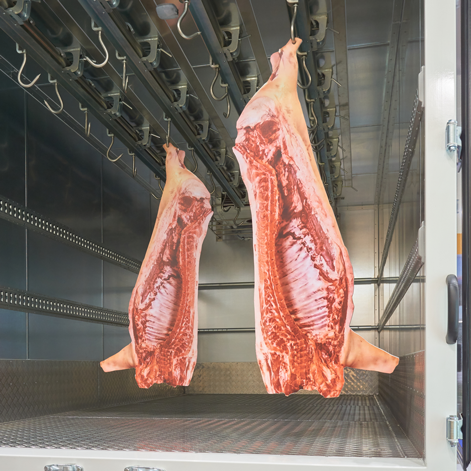The next time you load up a refrigerated delivery, keep in mind there could be some hitchhikers onboard!
Who are these hitchhikers you ask? Unfortunately, most likely they are in the form of unwanted bacteria and fungi that have hitched a ride on your truck from another location.
Refrigerated transport was a great development in the field of keeping food safe, but it also brings added complexities to those tasked with keeping the truck or transport fleet as pathogen-free as possible. As the one common vector that comes in contact with all pallets, crates and packaging, whether coming or going – truck drivers and fleet managers have to be proactive in their policies and practices to stop the spread of micro’s in their trucks.
There are no magic tricks to the cleaning and sanitising of refrigerated trucks, but the important thing is that this should be done thoroughly and often. Cleaning the truck after every load is the best practice, so any procedure will have to be quick and effective.
4 Steps to keeping your truck or fleet pathogen-free
- Thoroughly rinse out any “contact zones” in the trailer – starting from the front and working towards the rear doors. Included in this rinse should be the bottom and wheels of the pallet truck if there is one that stays permanently in the trailer.If unpackaged goods (such as pork carcasses, crates of fish or sacks of mussels) have been carried, then the contact zone will normally start up the wall, at the highest point where the product could have touched it.
If it is pre-packaged goods that are carried then normally only the floor would need to be rinsed, and any splash zones up the wall if there has been any leakage of the product.
- Once all visible soiling has been rinsed out, squeegee any pooling water off the floors with a dedicated squeegee; use this squeegee for anything else apart from truck interiors.
- Spray the walls (if applicable) and the floors with sanitising solution, paying particular attention to any deep grooves in the floor, the bottom and wheels of the pallet truck, the rubber seal around the doors, and the head of the squeegee.
- Then shut the trailer up and seal it with a coloured tag that shows it has been rinsed and sanitised. If raw food is going to be transported next, then the sanitiser will have to be rinsed out before loading this.
Cleaning Best Practices
As a good practice, once a week, the trailer should be completely rinsed – ceilings, walls, floor, – then a heavy duty, long-cling cleaner/sanitiser with thickening technology applied to all surfaces. Leave this to dwell for the specified time period, then rinse it out thoroughly. At the same time, add a slug dose of sanitiser to the catch tray and drain trap of the refrigeration unit. This will help ensure that no biofilms get the chance to develop over time.
Expert Tips
Things to bear in mind when deciding which chemicals to use for this operation are:
Ensure that the chemical is safe to use on soft metals such as aluminium, as this is normally what refrigerated truck bodies are made from. It also should not adversely affect the rubber door seals, as if these deteriorate the refrigeration performance could be compromised.
Check with the supplier that the sanitiser you want to use is effective at refrigeration temperatures, as lower temperatures can sometimes have an adverse effect on a sanitisers efficacy.
Hygiene Technologies recommends Securedet Commerical Transport Truck Wash
If you would like further help on what type of equipment or chemicals would be suitable for your own application, or want to be more proactive in stopping contamination spreading from your truck or fleet, please contact us now on 0800 REAL CLEAN (735 525), or click here and enter your details so one of our team can get in touch with you.

